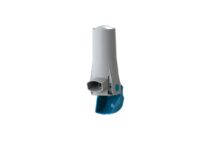Cell counting technology in medicine has evolved significantly, driven by the need for precise analysis of diverse cell characteristics. Cell count, cell type, size variability, and viability assessment are critical in clinical and research applications. The precision of cell counting results in medical applications depends on various factors.
1. Choice of Type of Automated Cell Counter
While automated cell counting instrumentdesign is ideal for efficiency, each method offers unique strengths that shape their suitability for diverse medical contexts. When selecting the most suitable method, consider your primary cell parameter of interest in medicine application—whether it’s viability assessment, precise cell counting, or accurate measurement of cell size.
For example, if viability assessment is paramount, flow cytometry distinguishesviable from non-viable cells using fluorescent dyes. For precise cell size measurements, image cytometry’s high-resolution imaging capabilities are ideal despite requiring more time for analysis.
Meanwhile, impedance counters, though rapid and suitable for high-throughput scenarios, may be less accurate when dealing with cells of varying sizes or shapes. Hence, aligning your choice of automated cell counter to your medical application cell analysis needs ensures optimal precision and reliability.
2. Cell Culture Viability Assessment
Biopharma fields such as cell therapy, research in cell biology, and drug development depend significantly on precise cell viability tests, which help distinguish living cells from dead cells. Therefore, if cell viability is a vital parameter in your list of test parameters, selecting the right cell counter with high viability is critical for ensuring reliable results in cell culture viability assessments. An ideal cell-counting instrument should offer accurate measurements and streamline sample preparation processes where necessary.
For instance, image cytometers with advanced software can distinguish between live and dead cells, providing comprehensive data on cell count, viability, and concentration. In contrast, while efficient for basic cell counting, impedance-based counters cannot assess cell viability, making them less suitable for applications requiring detailed cell health analysis.
3. Sample Characteristic
Understanding sample characteristics is vital for accurate analysis when choosing a cell-counting instrument. Factors such as cell type, size, and aggregation level profoundly affect the selection of counting methods and the performance of instruments. For instance, impedance-based cell counters use electrical signals to measure particle size and count accurately.
However, these electrical-based cell counting instruments may not be suitable for samples with complex cell types or aggregation, where size and count precision can be compromised. Therefore, comprehending your sample’s specific characteristics is essential for selecting the appropriate instrument to ensure precise and reliable analysis.
4. Cell Count Accuracy and Precision Needs
Cell counters are fundamental tools in laboratory settings, offering basic cell counting capabilities and advanced functionalities crucial for accurate analysis. These include:
- Cell viability tests
- Visual data presentation
- Data storage
- Data export capabilities
Therefore, when precision in cell counting is paramount, selecting a method that ensures accuracy while aligning with other needs is critical. Cell count precision is especially vital in medical applications like monitoring cancer cell populations, assessing immune responses, and evaluating cell viability for transplantation.
In these application areas, small discrepancies can have significant implications for clinical decisions and research outcomes. However, considering the sample preparation requirements for your method of choice is vital for the best results.
In conclusion, navigating the complexities of cell counting requires a strategic approach tailored to specific research or clinical needs. Choosing the most suitable type of automated cell counter ensures accurate cell counting and enhances capabilities such as viability assessment and data visualization. Also, integrating compatible cell-counting software further optimizes efficiency and facilitates comprehensive data analysis. By aligning these tools with the unique characteristics of your samples and experimental goals, researchers and healthcare professionals can achieve reliable results that drive advancements in medicine and biotechnology.




















